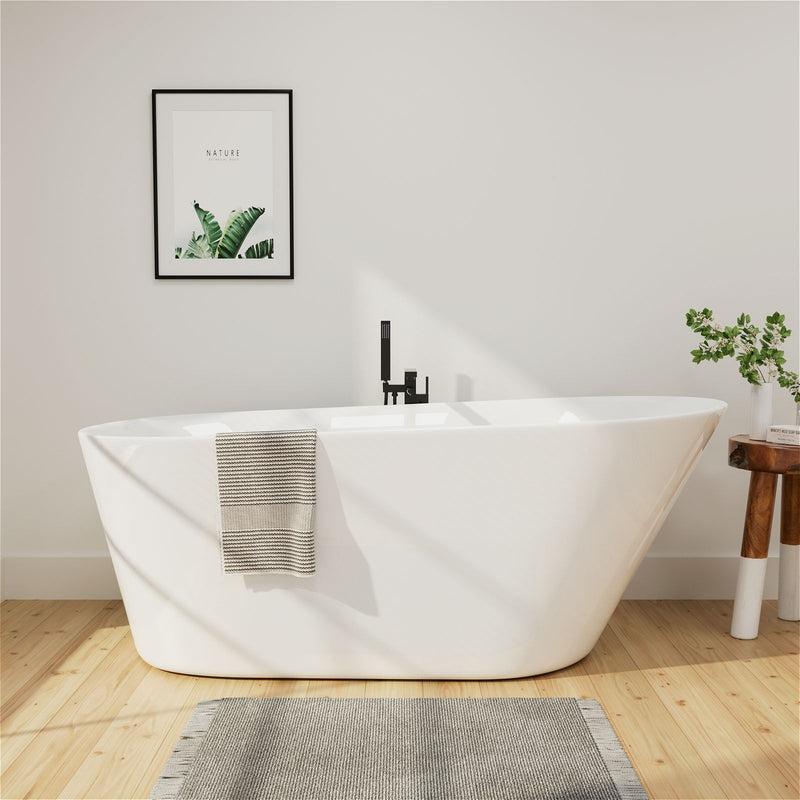Removing an old shower tray might seem like a daunting task, but with proper planning and the right approach, it can be accomplished successfully by many homeowners. Whether you're dealing with leaks, damage, or simply updating your bathroom, replacing a shower tray requires careful execution to avoid costly mistakes. This process involves multiple stages—from initial preparation and safety measures to the actual removal and cleanup. The key to success lies in understanding what's involved before you begin: assessing how the shower tray is installed, what tools you'll need, and what potential challenges might arise. Proper removal not only prepares your bathroom for a new installation but also helps you identify underlying issues that might need attention, such as water damage or subfloor problems. This comprehensive guide will walk you through the entire process, emphasizing safety, efficiency, and thorough preparation.

Safety First: Precautions and Preparations
Before starting any work, your priority should be safety—both personal and structural. Begin by turning off the water supply to the shower. This usually involves locating the shut-off valves for your bathroom or, if necessary, turning off the main water supply to the house. Next, switch off electricity to the bathroom at the circuit breaker to eliminate any risk of electrocution, especially if there are light fixtures, exhaust fans, or outlets near the shower area.
Protective gear is essential. Wear safety goggles to shield your eyes from debris, dust, and possible sharp fragments. Heavy-duty gloves will protect your hands from sharp edges and provide a better grip on tools. A dust mask or respirator is recommended, particularly if you suspect mold or if you'll be cutting or breaking materials that could generate airborne particles.
Prepare the work area to minimize mess and damage. Use plastic sheeting to cover floors and furniture outside the bathroom. Remove all items from the bathroom, including toiletries, towels, and rugs. If the toilet or vanity is close to the shower, consider covering them as well. Ensure the room is well-ventilated by opening a window or using a fan.
Finally, assess the shower tray's construction. Determine whether it's a single unit or a multi-piece installation. Check how it's secured—whether it's set in mortar, adhesive, or mechanical fasteners. This will influence the tools and techniques you use for removal.
Tools and Materials You'll Need
Having the right tools on hand is critical for an efficient and safe removal process. Here's what you'll likely need:
- Reciprocating saw or oscillating multi-tool: For cutting through seals, adhesives, and possible screws or nails.
- Hammer and chisel: Useful for breaking adhesive bonds or prying up the tray.
- Crowbar or pry bar: For lifting and leveraging the tray away from the wall and floor.
- Utility knife: To cut through caulk and sealant around the edges.
- Screwdrivers and wrenches: For disconnecting plumbing if necessary.
- Dust vacuum or shop vac: To clean up debris and dust as you work.
- Garbage bags or a debris container: For disposing of the old shower tray and related materials.
- Protective gear: As mentioned earlier—goggles, gloves, and a mask.
If your shower tray is particularly large or heavy, you may also need an assistant to help with lifting and maneuvering.
Step-by-Step Shower Tray Removal Process
Start by removing any fixtures attached to the shower tray, such as the shower drain cover. Use a screwdriver or wrench to loosen and remove the drain assembly. This will give you better access to the base and help you understand how the tray is attached.

Next, carefully cut through the caulk and sealant around the edges of the shower tray where it meets the walls and floor. A utility knife or a specialized sealant removal tool can make this easier. Be thorough—any remaining sealant can make removal difficult and increase the risk of damaging surrounding walls or floors.
Now, assess how the tray is secured. If it's glued down, you may need to use a hammer and chisel to break the adhesive bond. Insert the chisel between the tray and the floor and gently tap to create a gap. Once there's enough space, insert a pry bar and apply gradual pressure to lift the tray. If the tray is screwed into the wall or floor, locate and remove the screws first.
For trays set in mortar, the process is more labor-intensive. Use a reciprocating saw with a bi-metal blade to cut through the mortar bed. Start at one corner and work your way around. Once the tray is free, carefully lift it out. If it's too heavy, break it into smaller pieces using a hammer—but be cautious, as this can create sharp fragments.
As you remove the tray, check for any connected plumbing. If the drainpipe is still attached, you may need to disconnect it before fully removing the tray.
Dealing with Challenges and Unexpected Issues
During removal, you might encounter problems such as rusted screws, stubborn adhesive, or hidden water damage. If screws are rusted and won't turn, try applying a penetrating oil and let it sit for a few minutes. If that doesn't work, use a drill to remove the screw heads.
If the adhesive is particularly strong, use a heat gun to soften it. Be careful not to overheat adjacent surfaces, especially if they're plastic or vinyl. A putty knife can help scrape away softened adhesive.
Discovering water damage is common when removing an old shower tray. If you find rot or mold, address it immediately. Remove damaged subflooring or wall sections and replace them with new material. Ignoring water damage can lead to structural problems and health hazards down the line.
Cleaning and Preparing for a New Installation
Once the old tray is out, thoroughly clean the area. Remove any remaining adhesive, mortar, or debris. Use a vacuum to eliminate dust and dirt, then wipe the area with a damp cloth. Inspect the exposed subfloor and walls for damage or unevenness. If the subfloor is uneven, use a leveling compound to create a flat surface. This ensures your new shower tray will be stable and properly supported.
Check the plumbing connections to ensure they're clean and functional. If necessary, replace the drain assembly or pipes before installing the new tray.

Frequently Asked Questions
How long does it take to remove a shower tray?
A straightforward removal typically takes 2-4 hours, but this can vary depending on the installation method, the size of the tray, and whether you encounter unexpected issues like rust or water damage.
Can I remove a shower tray without damaging the walls?
In most cases, yes. Carefully cutting the sealant and gently prying the tray away from the walls minimizes the risk of damage. However, if the walls are already compromised or tightly bonded to the tray, some repair work might be necessary.
What should I do if I find mold during removal?
Mold requires immediate attention. Wear protective gear, isolate the area, and use a mold remediation solution to clean affected surfaces. If the mold has penetrated deeply into walls or subflooring, you may need to replace those sections.
Is it possible to reuse the old drain assembly?
It's not recommended. Reusing old plumbing components can lead to leaks or improper fitting. Install a new drain assembly designed for your new shower tray.
Do I need a professional for this job?
If you're comfortable with DIY projects and have the right tools, you can likely handle the removal. However, if you discover significant structural damage, plumbing issues, or mold, consulting a professional is advisable.
How do I dispose of the old shower tray?
Check local regulations for disposing of construction debris. Many areas require you to take it to a designated facility or schedule a special pickup. Some materials may be recyclable.
What's the most common mistake people make during removal?
Rushing the process and not fully disconnecting the tray from the floor and walls often leads to damage. Take your time to ensure all adhesives, screws, and seals are properly addressed before attempting to lift the tray.
Conclusion
Removing an old shower tray is a manageable project with the right preparation, tools, and patience. By following these steps—prioritizing safety, using appropriate techniques, and addressing challenges as they arise—you can successfully remove the tray and prepare your bathroom for a new installation. Remember, the effort you put into doing the job correctly will pay off in the long run, ensuring a solid foundation for your new shower and helping you avoid future problems. If at any point the project feels beyond your skill level, don't hesitate to call a professional. Whether you tackle it yourself or seek help, the result will be a safer, more functional bathroom ready for its next upgrade.





